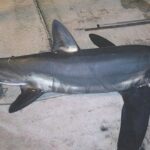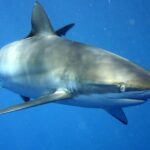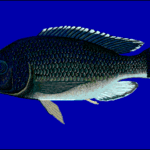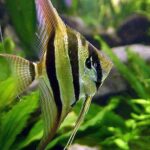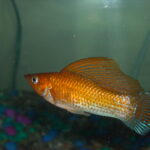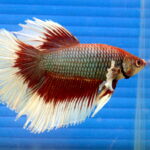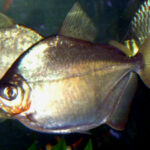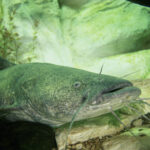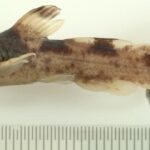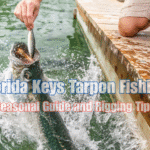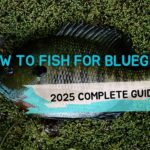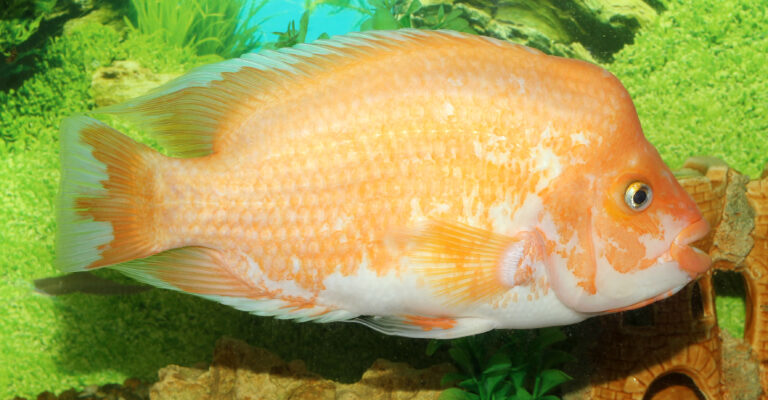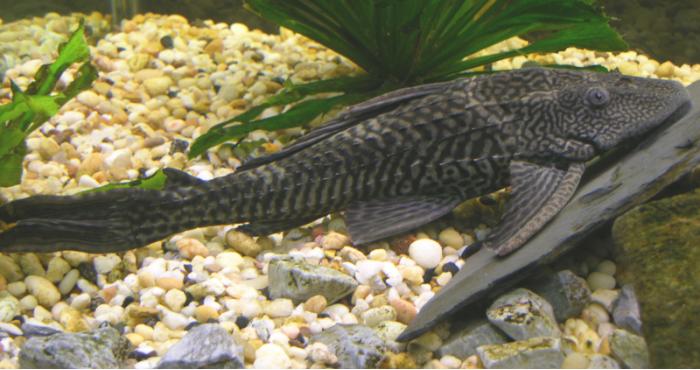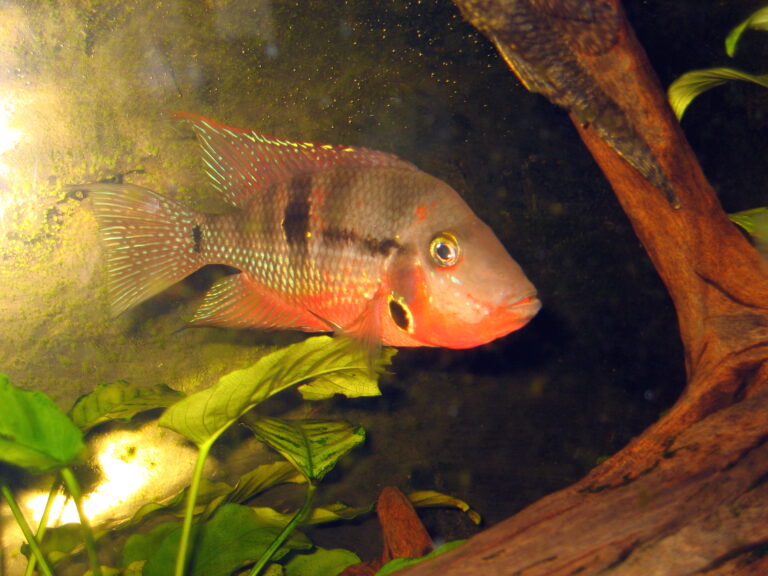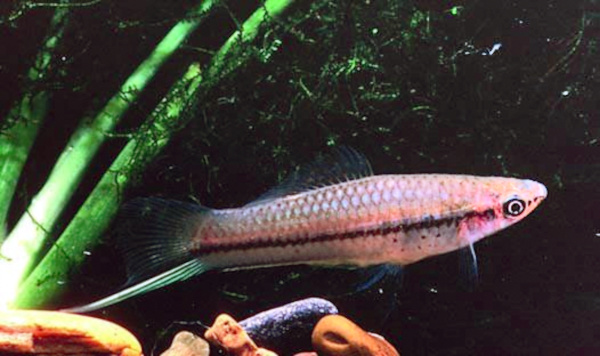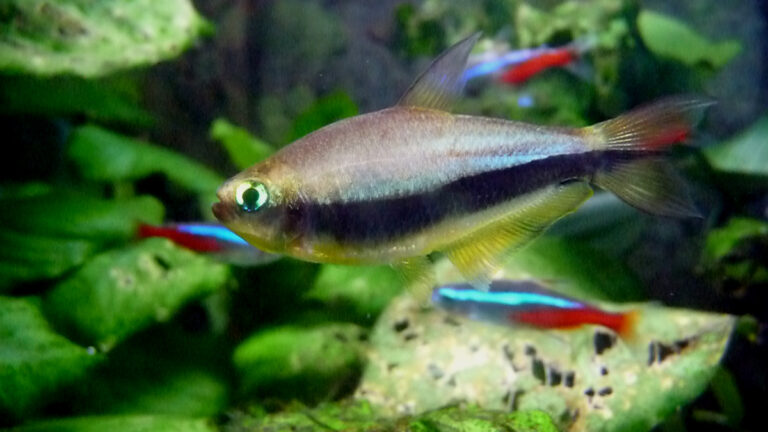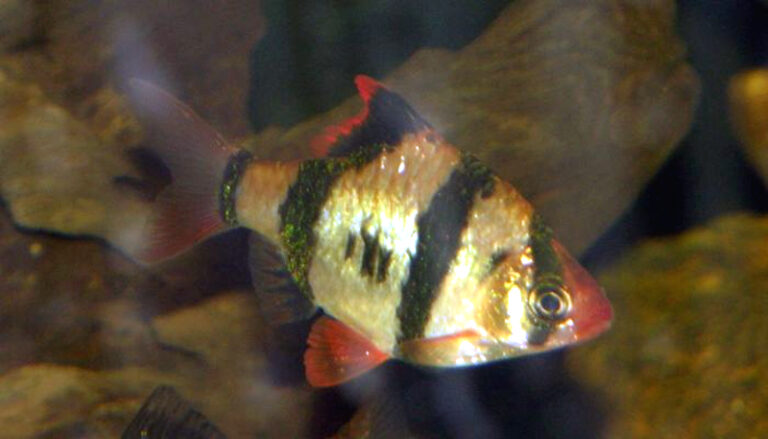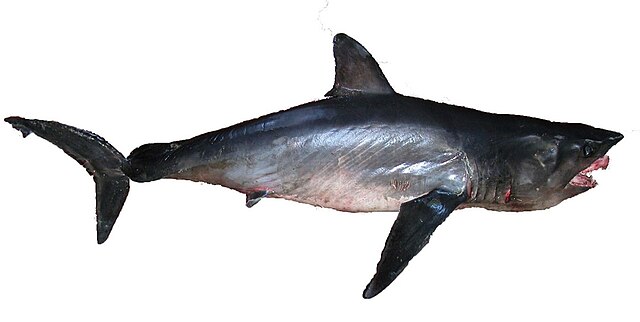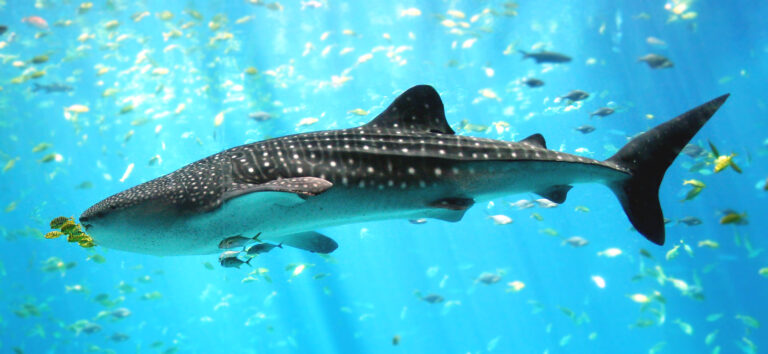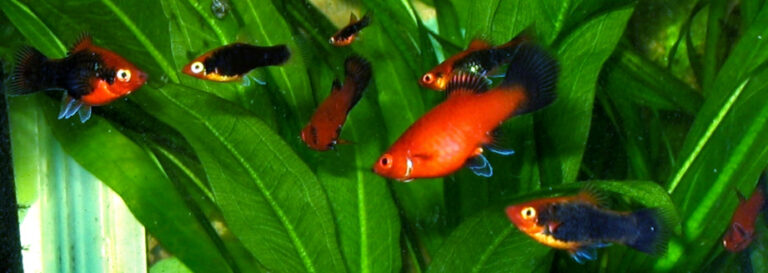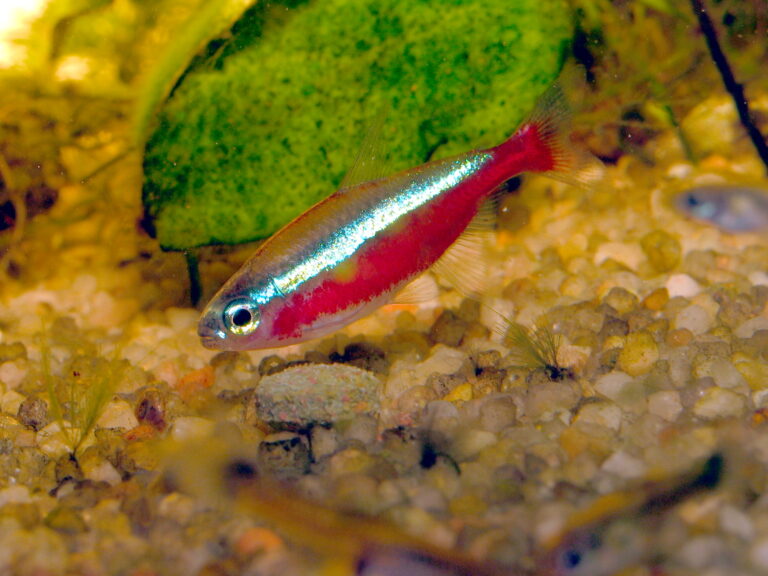Spotted Bass
By Ryan Maron | Last Modified: July 8, 2025
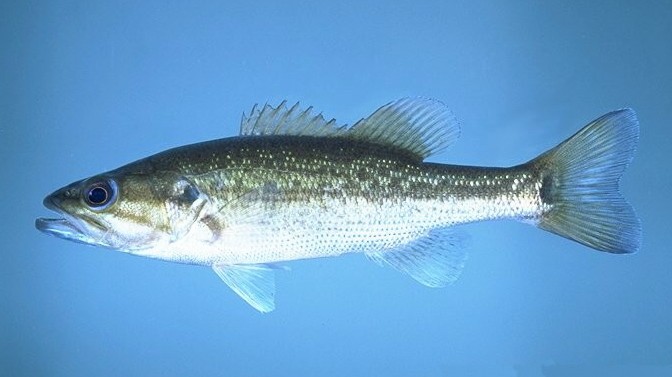
The Spotted Bass (Micropterus punctulatus) stands as one of North America’s most distinctive freshwater game fish, renowned for its aggressive feeding behavior and remarkable adaptability to diverse aquatic environments. This species, commonly referred to as the Kentucky bass or spotted black bass, occupies a crucial ecological niche as both predator and prey within temperate freshwater ecosystems. The Spotted Bass serves as an important indicator species for water quality and habitat health, while simultaneously supporting significant recreational fishing industries across its native range. As an apex predator in smaller water bodies and a key mesopredator in larger systems, this species plays a vital role in maintaining aquatic food web stability and controlling prey fish populations.
| Feature | Details |
|---|---|
| Common Name | Spotted Bass |
| Scientific Name | Micropterus punctulatus |
| Family | Centrarchidae |
| Typical Size | 25-35 cm (10-14 inches), 0.5-1.5 kg (1-3 pounds) |
| Habitat | Clear rocky streams and deep reservoirs |
| Diet | Piscivorous opportunist |
| Distribution | Southeastern United States |
| Conservation Status | Least Concern |
Taxonomy & Classification
The Spotted Bass belongs to the family Centrarchidae, which encompasses North American sunfishes and black basses. First described by Rafinesque in 1819, Micropterus punctulatus represents one of the most taxonomically complex species within the Micropterus genus. The species exhibits significant genetic diversity across its range, with distinct populations showing varying morphological characteristics that have led to ongoing phylogenetic research.
Within the Centrarchidae family, the Spotted Bass shares its genus with other prominent black bass species, including the largemouth bass (Micropterus salmoides) and smallmouth bass (Micropterus dolomieu). Recent molecular analyses have revealed three distinct lineages within M. punctulatus: the Northern Spotted Bass, Alabama Spotted Bass, and Guadalupe Bass populations. These lineages demonstrate varying degrees of reproductive isolation and genetic differentiation, suggesting potential subspecies designation in future taxonomic revisions.
The evolutionary history of Spotted Bass traces back approximately 5 million years to the Pliocene epoch, when ancestral Micropterus populations underwent rapid speciation events. Phylogenetic studies indicate that M. punctulatus diverged from its sister species M. dolomieu approximately 3.2 million years ago, with subsequent population fragmentation during Pleistocene glacial periods contributing to the current genetic structure observed across the species range.
Physical Description
The Spotted Bass exhibits distinctive morphological characteristics that distinguish it from other black bass species. Adult specimens typically measure 25-35 centimeters in length, though exceptional individuals may reach 50 centimeters and weights exceeding 4 kilograms. The species displays a laterally compressed body form with a moderately elongated profile, optimized for both burst swimming and sustained cruising in flowing water environments.
Coloration patterns represent the most diagnostic feature of Spotted Bass identification. The dorsal surface exhibits olive-green to bronze hues, transitioning to silver-white along the ventral regions. The characteristic spotting pattern consists of distinct dark spots arranged in horizontal rows below the lateral line, persisting throughout the fish’s lifetime unlike the similar patterns observed in juvenile largemouth bass. A prominent dark lateral stripe extends from the operculum to the caudal peduncle, often interrupted by the spotted pattern.
Fin morphology reflects the species’ ecological adaptations to diverse aquatic environments. The dorsal fin displays a shallow notch between the spiny and soft-rayed portions, with 10-11 spines and 12-13 soft rays. The anal fin contains three spines and 10-12 soft rays, while the pectoral fins are relatively long and pointed, facilitating precise maneuvering in complex rocky habitats. Scale counts typically range from 57-69 along the lateral line, with ctenoid scales providing hydrodynamic efficiency and protection from abrasion.
Habitat & Distribution
The Spotted Bass occupies a diverse range of freshwater habitats throughout the southeastern United States, with its native distribution encompassing portions of the Ohio, Tennessee, and lower Mississippi River basins. The species demonstrates remarkable habitat flexibility, thriving in both lotic and lentic environments from small mountain streams to large impoundments. Native populations extend from southern Ohio and West Virginia southward through Kentucky, Tennessee, Alabama, and into portions of Georgia, Mississippi, and Louisiana.
Within its native range, the Spotted Bass shows strong preferences for clear, rocky substrates with moderate to swift current velocities. Stream-dwelling populations typically inhabit pools and runs with depths ranging from 0.5 to 3 meters, where rocky outcrops and fallen timber provide cover and foraging opportunities. The species requires water temperatures between 18-26°C for optimal growth and reproduction, with dissolved oxygen levels exceeding 5 mg/L essential for long-term population sustainability.
Reservoir populations have established throughout much of the species’ range following extensive dam construction during the 20th century. These lentic environments support robust Spotted Bass populations, particularly in areas with rocky shorelines, submerged structure, and maintained water clarity. The species has been widely introduced beyond its native range, with established populations documented in Texas, Oklahoma, Arkansas, and California, though these introductions have raised concerns about impacts on native fish communities.
Habitat quality parameters critical for Spotted Bass populations include water temperature stability, adequate dissolved oxygen levels, and minimal sedimentation. The species exhibits sensitivity to habitat degradation, particularly increased turbidity and siltation associated with agricultural runoff and urban development. Seasonal movements between deeper overwintering areas and shallow spawning habitats require connectivity between diverse habitat types within watershed systems.
Diet & Feeding Behavior
The Spotted Bass functions as an opportunistic piscivore, exhibiting remarkable dietary flexibility throughout its life cycle. Adult specimens primarily consume fish prey, including members of the Centrarchidae, Cyprinidae, and Percidae families, though the species readily incorporates crustaceans, insects, and other aquatic invertebrates when fish prey availability declines. This dietary plasticity contributes significantly to the species’ ecological success across diverse aquatic environments.
Foraging behavior varies considerably between stream and reservoir populations. Stream-dwelling Spotted Bass typically employ ambush predation strategies, utilizing rocky cover and current breaks to surprise prey fish. These populations show strong preferences for crayfish, particularly during molting periods when soft-shelled individuals become vulnerable. Reservoir populations adopt more active foraging strategies, often forming loose aggregations that pursue schools of pelagic prey fish such as threadfin shad and gizzard shad.
Seasonal dietary shifts reflect changing prey availability and metabolic demands. During spring spawning periods, adult Spotted Bass reduce feeding activity, though nest-guarding males may consume small fish and invertebrates that threaten developing eggs. Summer feeding intensity peaks as elevated water temperatures increase metabolic demands, with adults consuming prey items representing 10-15% of their body weight daily. Autumn feeding behavior focuses on accumulating energy reserves for winter dormancy, with individuals targeting high-energy prey such as large crayfish and adult fish.
Juvenile Spotted Bass exhibit distinct ontogenetic dietary shifts, beginning with zooplankton consumption during their first month of life. Young-of-year individuals transition to small insects and crustaceans by late summer, gradually incorporating small fish prey as gape limitation decreases. This dietary progression occurs more rapidly in productive environments, with juveniles in nutrient-rich reservoirs achieving piscivorous feeding earlier than their stream-dwelling counterparts.
Behavior & Adaptations
The Spotted Bass demonstrates complex behavioral adaptations that reflect its evolutionary history as both a stream and reservoir species. Territorial behavior intensifies during spawning periods, with males establishing and defending nesting sites against conspecifics and other centrarchid species. These territorial displays involve aggressive posturing, fin spreading, and direct physical confrontation when necessary to maintain spawning site integrity.
Schooling behavior varies significantly between juvenile and adult life stages. Young-of-year Spotted Bass form loose aggregations in shallow, vegetated areas where collective vigilance reduces predation risk. As individuals mature, schooling tendency decreases, with adults adopting more solitary habits except during spawning periods. However, reservoir populations may form temporary feeding aggregations when pursuing concentrated prey schools, particularly during autumn when threadfin shad concentrate in shallow coves.
Sensory adaptations reflect the species’ diverse habitat requirements and feeding strategies. The lateral line system exhibits enhanced sensitivity to water displacement, enabling detection of prey movement in turbid water conditions. Visual acuity remains high across various light conditions, with retinal adaptations supporting both dawn and dusk feeding activity. Chemoreception capabilities allow discrimination between prey types and recognition of chemical alarm substances released by injured conspecifics.
Thermal behavior demonstrates the species’ preference for moderate water temperatures. Spotted Bass actively seek thermal refugia during extreme temperature events, utilizing spring-fed areas during summer heat and deeper water during winter cold periods. These behavioral thermoregulation strategies prove particularly important in shallow reservoir systems where thermal stratification may be limited.
Reproduction & Life Cycle
The Spotted Bass reproductive cycle follows a seasonal pattern closely tied to water temperature and photoperiod changes. Spawning typically occurs when water temperatures reach 15-20°C, generally between March and May across most of the species’ range. Males initiate the breeding process by constructing circular nests in shallow areas with firm substrates, preferentially selecting sites with gravel or rocky bottoms that provide optimal conditions for egg development.
Nest construction involves males using their caudal fin to excavate depressions 30-60 centimeters in diameter and 5-15 centimeters deep. Site selection criteria include protection from strong currents, adequate water circulation for oxygenation, and proximity to cover for predator avoidance. Males may construct multiple nests before successfully attracting females, with dominant individuals securing the most favorable spawning locations through territorial defense.
Courtship behavior consists of elaborate displays designed to attract females and encourage egg deposition. Males establish territories around nest sites and engage in lateral displays, color intensification, and acoustic signals to attract gravid females. Once a female enters the nest area, spawning occurs through synchronized swimming movements where eggs and sperm are released simultaneously. A single female may deposit 2,000-8,000 eggs depending on her size and condition, with larger females producing significantly more offspring.
Parental care responsibilities fall exclusively to males, who guard the nest site throughout the 3-5 day incubation period. Males actively fan the eggs to ensure adequate oxygenation and remove debris that might compromise egg survival. After hatching, larvae remain in the nest for an additional 5-7 days while absorbing their yolk sacs. Post-emergence fry continue receiving male protection for 2-3 weeks until they develop sufficient swimming ability and anti-predator responses to survive independently.
Growth rates vary considerably based on environmental conditions and population density. Under optimal conditions, juvenile Spotted Bass may reach 10-15 centimeters by their first winter, achieving sexual maturity between ages 2-4. Lifespan typically ranges from 7-10 years in the wild, though exceptional individuals may survive beyond 15 years in protected environments with minimal fishing pressure.
Predators & Threats
The Spotted Bass faces predation pressure throughout its life cycle, with vulnerability patterns shifting dramatically between juvenile and adult stages. Eggs and larvae experience high mortality rates due to predation by numerous species, including other centrarchids, cyprinids, and aquatic invertebrates. Nest predation by sunfish species, particularly bluegill and spotted sunfish, represents a significant source of reproductive failure, prompting intense parental defense behaviors from guarding males.
Juvenile Spotted Bass encounter predation from a diverse array of species, including larger conspecifics, other black bass, northern pike, muskellunge, and various catfish species. Avian predators such as herons, egrets, and kingfishers also target young fish in shallow areas. Survival strategies include seeking refuge in dense vegetation, rocky crevices, and shallow water areas where larger predators cannot effectively forage.
Adult Spotted Bass experience reduced predation pressure due to their size and defensive capabilities, though they remain vulnerable to apex predators including large muskellunge, flathead catfish, and alligator gar in appropriate habitats. Piscivorous birds such as cormorants and ospreys occasionally capture adult specimens, particularly during spawning periods when fish occupy shallow, exposed areas.
Anthropogenic threats pose increasingly significant challenges to Spotted Bass populations. Habitat degradation through dam construction, channelization, and watershed development has fragmented historic populations and reduced available spawning habitat. Water quality deterioration from agricultural runoff, urban stormwater, and industrial discharge creates suboptimal conditions that stress populations and increase disease susceptibility. Climate change impacts, including increased water temperatures and altered precipitation patterns, may push some populations beyond their thermal tolerance limits.
Invasive species introduction represents an emerging threat to native Spotted Bass populations. Competition from introduced species such as striped bass and white bass can reduce prey availability and alter ecosystem dynamics. Hybridization with closely related species, particularly smallmouth bass in areas where ranges overlap, may compromise genetic integrity of pure Spotted Bass populations.
Conservation Status
The International Union for Conservation of Nature (IUCN) classifies the Spotted Bass as Least Concern on a global scale, reflecting the species’ relatively stable population status across most of its native range. However, this broad classification masks significant regional variations in population trends and conservation needs. Several subspecies and distinct populations face localized threats that warrant conservation attention and management intervention.
The Guadalupe Bass (M. p. treculii), endemic to Texas, represents the most conservation-sensitive population within the Spotted Bass complex. This subspecies faces severe threats from habitat degradation and genetic introgression with introduced smallmouth bass. The Texas Parks and Wildlife Department has implemented comprehensive conservation programs including habitat restoration, genetic monitoring, and selective breeding programs to maintain pure Guadalupe Bass populations.
Alabama Spotted Bass populations have experienced significant declines due to habitat modification and water quality degradation. The construction of navigation locks and dams along major river systems has altered flow regimes and fragmented populations, reducing genetic exchange between river segments. Water temperature increases associated with reservoir construction have pushed some populations beyond their optimal thermal ranges, leading to recruitment failures and population declines.
Conservation efforts focus on habitat protection and restoration, water quality improvement, and population monitoring. The U.S. Fish and Wildlife Service collaborates with state agencies to implement watershed-scale conservation strategies that address multiple stressors simultaneously. These efforts include riparian buffer restoration, agricultural best management practices, and dam removal projects where appropriate to restore natural flow regimes.
Research priorities include genetic monitoring to track hybridization rates, population viability assessments for isolated populations, and climate change vulnerability analyses. Long-term monitoring programs track population trends, reproductive success, and habitat quality parameters to inform adaptive management strategies. Public education initiatives promote awareness of Spotted Bass conservation needs and encourage responsible angling practices.
Human Interaction
The Spotted Bass supports significant recreational fishing opportunities throughout its range, contributing substantially to local and regional economies. Angler surveys indicate that Spotted Bass rank among the most sought-after freshwater game fish species in the southeastern United States, with millions of angler-days annually devoted to targeting this species. The aggressive feeding behavior and acrobatic fighting ability of Spotted Bass make them particularly attractive to sport anglers.
Tournament fishing circuits, including both professional and amateur competitions, regularly feature Spotted Bass as target species. Major reservoir systems such as Kentucky Lake, Lake Ouachita, and Spotted Bass-rich streams like the Buffalo National River host numerous fishing tournaments annually. These events generate substantial economic benefits for local communities through lodging, dining, and equipment purchases, while also promoting conservation awareness among participants.
Angling techniques for Spotted Bass vary considerably based on habitat type and seasonal conditions. Stream fishing typically employs small lures and live bait presentations that mimic natural prey items such as crayfish and small fish. Popular techniques include using smallmouth bass fishing strategies adapted for spotted bass behavior patterns. Reservoir fishing often involves deeper water techniques including drop-shotting, Carolina rigging, and deep-diving crankbaits to target fish in their preferred structural habitats.
Stocking programs have established Spotted Bass populations in numerous water bodies beyond their native range, though these introductions have produced mixed results. Successful introductions in Texas and Oklahoma reservoirs have created valuable fisheries, while some introductions have resulted in negative impacts on native fish communities. Current stocking policies emphasize native species restoration and careful evaluation of introduction proposals to minimize ecological risks.
Aquaculture production of Spotted Bass remains limited compared to other centrarchid species, though specialized facilities produce fish for stocking programs and research purposes. The species’ relatively slow growth rate and specific habitat requirements limit commercial aquaculture potential, though ornamental pond stocking represents a niche market segment.
Interesting Facts
The Spotted Bass possesses several remarkable characteristics that distinguish it from other black bass species. Unlike largemouth bass, which lose their juvenile spotting patterns as they mature, Spotted Bass retain their distinctive spotted markings throughout their entire lives, making them easily identifiable even as large adults. These spots serve as individual identification markers, with each fish displaying a unique pattern that researchers use for population studies and behavioral research.
Acoustic communication plays a surprisingly important role in Spotted Bass behavior. Males produce distinctive drumming sounds during spawning periods using specialized sonic muscles attached to their swim bladders. These sounds serve multiple functions including territory establishment, mate attraction, and warning signals to competing males. The frequency and intensity of these calls vary with fish size, with larger males producing lower-frequency, more powerful sounds that travel greater distances underwater.
The species exhibits remarkable longevity compared to other centrarchids, with documented individuals exceeding 20 years of age in protected environments. This longevity, combined with their late sexual maturation, makes Spotted Bass populations particularly vulnerable to overfishing pressure. Growth rates vary dramatically between populations, with some individuals reaching trophy sizes exceeding 6 pounds, while others in crowded environments may never exceed 12 inches in length.
Spotted Bass demonstrate sophisticated learning abilities and memory retention. Research studies have documented individual fish remembering feeding locations and predator encounters for extended periods, suggesting complex cognitive abilities that aid in survival. This behavioral flexibility contributes to their success as both stream and reservoir species, allowing rapid adaptation to changing environmental conditions.
The species plays an important role in traditional Native American fishing practices across its range. Historical accounts describe specialized fishing techniques developed by Cherokee and Creek peoples specifically for targeting Spotted Bass in rocky stream environments. These traditional knowledge systems often incorporated detailed understanding of seasonal movement patterns and feeding behaviors that modern scientific research has subsequently validated.
Frequently Asked Questions
How can I distinguish a Spotted Bass from other black bass species?
Spotted Bass can be identified by their distinctive horizontal rows of spots below the lateral line, which persist throughout their entire life. Unlike largemouth bass juveniles that lose their spots with age, or smallmouth bass that display vertical barring patterns, Spotted Bass maintain their characteristic spotting. Additionally, they possess a more streamlined body shape than largemouth bass and typically have a less pronounced notch between the dorsal fin spines and soft rays compared to smallmouth bass.
What is the best time of year to catch Spotted Bass?
Spotted Bass fishing success peaks during spring and fall periods when water temperatures range between 18-24°C. Spring fishing during the pre-spawn and spawn periods (March-May) offers excellent opportunities as fish move into shallow areas and become more aggressive. Fall fishing (September-November) provides consistent action as fish actively feed to build energy reserves for winter. Early morning and evening periods typically produce the best results regardless of season.
Do Spotted Bass require different fishing techniques than other bass species?
While Spotted Bass share many behavioral similarities with smallmouth bass fishing techniques, they often require more finesse presentations due to their tendency to inhabit clearer water environments. Smaller lures, lighter line weights, and more subtle presentations typically prove more effective. In stream environments, techniques that work well for smallmouth bass often succeed for Spotted Bass, while reservoir fishing may require deeper water strategies similar to largemouth bass fishing.
Are Spotted Bass good to eat?
Spotted Bass are considered excellent table fare, with firm, white meat that has a mild, sweet flavor. Their meat quality is comparable to other black bass species, though some anglers prefer their taste over largemouth bass. However, many anglers practice catch-and-release fishing for Spotted Bass due to their slower growth rates and conservation concerns in some areas. When kept for consumption, fish should be properly cleaned and stored on ice to maintain optimal meat quality.
Conclusion
The Spotted Bass represents a remarkable example of evolutionary adaptation and ecological resilience within North American freshwater ecosystems. As both a keystone predator and important game fish species, M. punctulatus plays crucial roles in maintaining aquatic community structure while supporting significant recreational fisheries across its range. Understanding the complex ecological relationships, behavioral adaptations, and conservation needs of this species proves essential for ensuring its long-term survival and continued contribution to biodiversity conservation efforts. Through careful management, habitat protection, and responsible angling practices, future generations can continue to appreciate the ecological and recreational value that Spotted Bass populations provide to freshwater ecosystems throughout the southeastern United States.
Share The Article:
More Fish Species:
-
Midas Cichlid
The Midas Cichlid (Amphilophus citrinellus) stands as one of Central America’s most recognizable and ecologically significant freshwater fish species….
-
Pleco
The **Pleco**, scientifically known as *Pterygoplichthys multiradiatus* (common pleco), represents one of the most recognizable and ecologically significant groups…
-
Firemouth Cichlid
The Firemouth Cichlid (*Thorichthys meeki*) stands as one of Central America’s most recognizable freshwater fish species, distinguished by its…
-
Green Swordtail
The Green Swordtail (Xiphophorus hellerii) represents one of the most recognizable and ecologically significant freshwater fish species in both…
-
Emperor Tetra
The Emperor Tetra (*Nematobrycon palmeri*) stands as one of the most distinctive and sought-after freshwater fish species in the…
-
Tiger Barb
The Tiger Barb (Puntigrus tetrazona) stands as one of Southeast Asia’s most recognizable freshwater cyprinids, distinguished by its vibrant…
Discover
-
Longfin Mako Shark
The Longfin Mako Shark represents one of nature’s most enigmatic and misunderstood predators, embodying both the raw power and…
-
Whale Shark
The whale shark (*Rhincodon typus*) stands as the ocean’s largest fish species, representing one of nature’s most remarkable gentle…
-
How to Become a Better Fisherman in 2025: Master These 5 Skills
There’s something magical about that moment when your line goes tight and you feel the unmistakable pull of a…
-
How to Fish in Murky Water: Expert Michigan Angler Shares Secrets
Last Tuesday, I was standing knee-deep in chocolate-colored water where Kellogg Creek dumps into the Kalamazoo River. Water visibility:…
-
What do You Need for Fishing in 2025? | Essential Gear for Beginners and Veterans
As I was organizing my tackle box last weekend for an early spring trip to Lake Michigan, I realized…
-
Fishing in Long Beach: Best Guide (Local Secrets Revealed)
There’s something magical about casting a line along the Southern California coast, especially when fishing in Long Beach. I’ve…
Discover
-
Colorful Tetra Fish Types Every Aquarium Owner Should Know
When I set up my first freshwater aquarium years ago, tetras quickly became my go-to fish. These colorful little…
-
Night Fishing for Beginners: Expert Techniques That Actually Work
My first night fishing trip was an absolute disaster. Picture this – fifteen-year-old me, armed with a rusty flashlight…
-
Wagtail Platy
The Wagtail Platy stands as one of the most distinctive and beloved freshwater aquarium fish, renowned for its elegant…
-
Shubunkin Goldfish
The Shubunkin Goldfish (Carassius auratus) represents one of the most popular and visually striking varieties of goldfish kept in…
-
Texas Saltwater Fishing: Essential Tips From Adam
It was June 2010, and man was I cocky heading into that first Texas saltwater trip. Drove down from…
-
Cardinal Tetra
The Cardinal Tetra (Paracheirodon axelrodi) stands as one of the most vibrant and sought-after freshwater aquarium fish in the…

